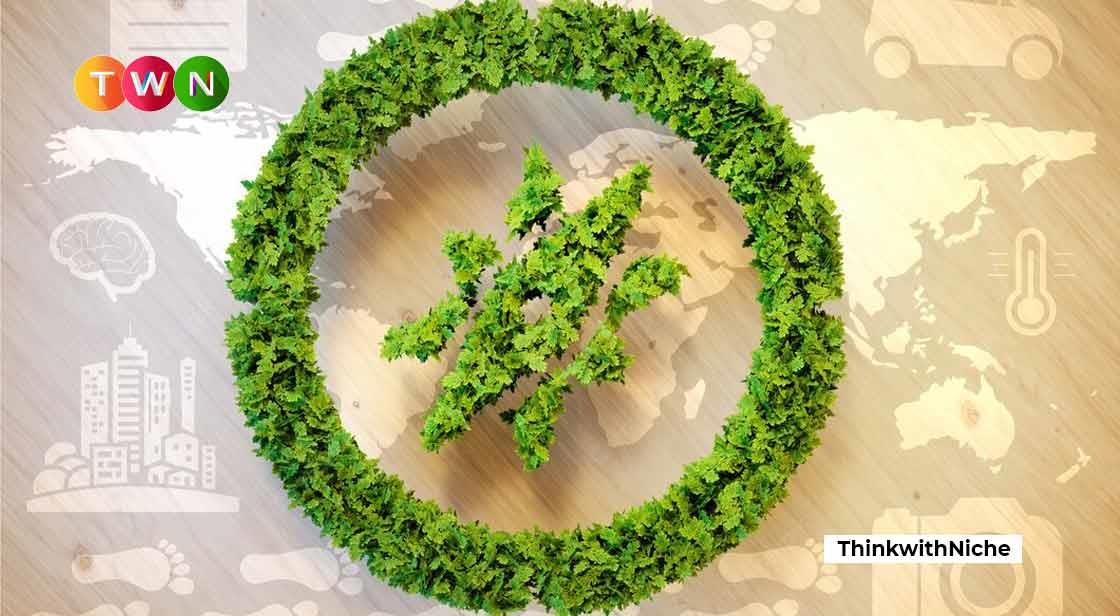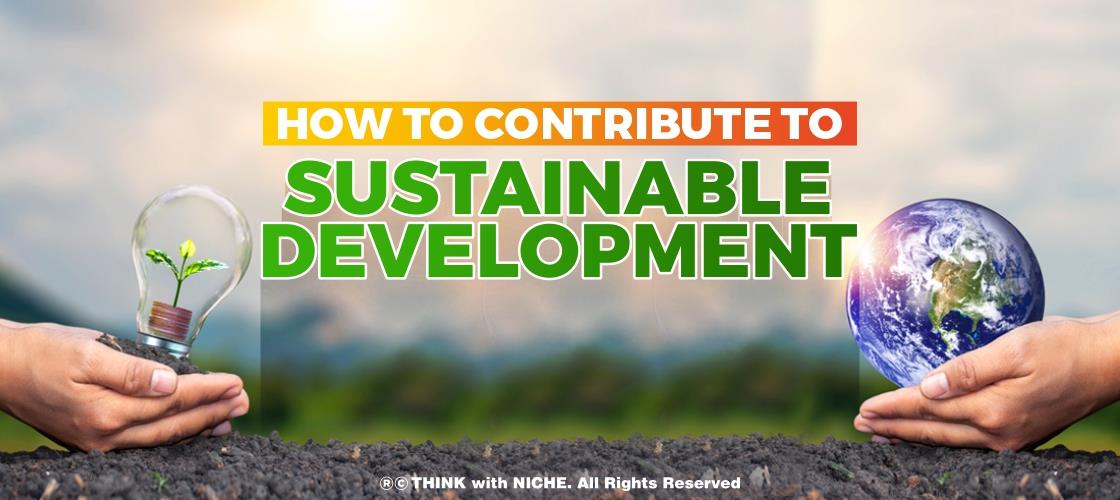How to Balance Environmental Sustainability with Sustainable Leadership

Blog Post
It is no secret that we are in the midst of a complex global environmental crisis. The Paris Agreement of 2015 marked the start of a new era in global awareness and cooperation in combating the threat of climate change. Most countries and major corporations are looking for ways to reduce environmental threats and promote sustainability. This article is all about a sustainable environment and how a leader can create an eco-friendly zone for employees, #TWN
Human well-being is inextricably linked to environmental health. As per the World Health Organization, 24% of deaths worldwide can be attributed to avoidable environmental factors. People require clean air to breathe, clean water to drink, and safe living environments free of dangerous compounds and hazards.
As we begin to see the long-term repercussions of exponential industrial growth and energy consumption, we must act to overturn these effects and prevent further damage, ensuring that future generations have safe places to live. For enterprises, it means committing to environmentally sustainable practices to contribute to the development of thriving communities and secure future growth potential.
Before we get into the leadership aspect of environmental sustainability, let us know what is environmental sustainability.
What Is Leadership & Environmental Sustainability?
Traditional definitions of leadership emphasize a single individual's activity, attitudes, and characteristics, as well as the impact they can have on those around them. Charismatic, Motivational, Inspiring, Committee, and Communication prowess, are all words that are associated with traditional interpretations of leaders and leadership.
The responsibility to preserve biodiversity and protect global ecosystems in supporting health and well-being now and in the future is known as environmental sustainability. Because so many environmental decisions do not have an immediate impact, one of the most important areas of environmental sustainability is its forward-thinking nature. Indeed, the United States Environmental Protection Agency defines it as "meeting today's needs without jeopardizing future generations' ability to meet their own needs."
Because of the global environmental crisis, the next four decades will be the most crucial in human history. We need decisive, thoughtful action in the face of this enormous challenge, as well as individuals who understand what leadership should look like in the face of multifaceted challenges.
Why Sustainability Needs a Strong & Sustainable Leadership?
It is no secret that we are in the midst of a complex global environmental crisis. The Paris Agreement of 2015 marked the start of a new era in global awareness and cooperation in combating the threat of climate change. Most countries and major corporations are looking for ways to reduce environmental threats and promote sustainability.
But what kind of leadership is required to achieve genuine, long-term progress on environmental goals and projects? Traditional leadership models emphasize a personality cult centered on a single leader or personality. Consider Mahatma Gandhi or CEOs such as Jeff Bezos, Indra Nooyi, and Steve Jobs. This type of leadership is typically linked to individual personality characteristics or some enigmatic inborn quality.
Like these leaders, let’s talk about how leaders can help their employees can create an eco-friendly environment around and inculcate the values of sustainable leadership.
Steps To Becoming a Leader in Sustainability
- Understanding local and global issues
I would advise you to educate yourself on the global impact of the products or services you offer. Then, for innovative and creative solutions, consider the challenges and opportunities in your market. When you take a step back to assess, you might be amazed by the answers you come up with.
- Committing at the leadership level
You must become the leading environmental activist if your company is to become an environmental leader. As a result, you must make it a priority and a part of your company's culture. As a leader, you must speak about it at every possibility and encourage your leadership team to do the same.
- Recruit the ones who are environmental champions
Once you've decided to become an environmental chief, you must put in the effort. Appoint someone in your group to implement the issue as a key strategy for your company. Hold them accountable and answerable. These champions will assist you with strategy, execution, and message dissemination.
- Develop metrics for every plan
As most people are aware, you can only alter what you can quantify. As a result, once the plan is in place, make sure to develop quantitative measures. Everything from your energy consumption to your computer usage and even how you use your office space could be tracked. Ensure that the metrics are delivered regularly during group and executive conferences.
- Promote your efforts in the community
To be an environmental leader, you must ensure that your efforts are promoted in your community. You could accomplish this through corporate social responsibility programs, social media, and targeted messaging. In other words, you want your team and society to be supportive of your business and its long-term viability.
The more people who understand how serious you and your company are about environmental leadership, the better. Finally, as people who value environmental leadership learn about your value proposition for sustainability, your profitability will rise as customers become loyal and committed to you.
Ways for an Eco-Friendly Work Environment Under Sustainable Leadership
As modern businesses have adapted to many of the pandemic-caused disruptions to daily operations, an increasing number of organizations are strongly encouraging their employees to work from home. While this is great news for employees who need more flexibility at work, it has created challenges for organizations looking to create viable, eco-friendly working environments.
However, now that the majority of the world has adapted to the new normal of fully remote and hybrid employment conditions across multiple industries, businesses can focus on creating eco-friendly work environments for their workers, whether in or outside of company-owned facilities.
Now let’s talk about how to become sustainable and create an eco-friendly environment.
Going Paperless
Going paperless is one of the most important and impactful modifications a company can make to establish an eco-friendly remote workplace. It entails scanning and digitizing all work-related documents, forms, and communications to reduce or eliminate the need for printing. It not only saves resources such as paper and ink but also reduces clutter and keeps information organized and accessible from any device or location.
Many tools and services, such as software solutions that can scan and digitize paper documents, cloud-based backup, file-sharing services, and communication tools to enable digital messaging instead of printed emails, can assist businesses in going paperless.
Implementations of Electronics and Paper Recycling Programs
Implementing recycling programs for electronics and paper is another way of creating an eco-friendly remote workplace. It entails establishing collection points in workplaces for employees to recycle old or broken electronics such as computers, phones, printers, and other devices. It also entails establishing a system for collecting and recycling used paper goods such as printer cartridges, envelopes, flyers, and brochures, as well as making plans for large-volume paper shredding.
Companies can collaborate with their facilities management teams to determine the best places for recycling collection points and install signboards to remind employees as to what can be recycled. On company websites or intranets, they can also provide details about recycling various types of electronic and paper products.
Providing Equipment that is Energy Efficient
Providing your workforce with energy-efficient equipment can be a great way for leaders to make a remote working environment a little eco-friendlier. It includes purchasing energy-efficient computer systems, laptops, and monitors, as well as peripherals such as printers, scanners, and routers. Furthermore, many modern devices include energy-saving features such as power distribution settings and automatic shut-off timers, which can aid in lowering electricity consumption.
Enterprises should rely on their IT departments to ensure that all new gear purchases are made with a focus on sustainability. They can also encourage employees to use available energy-saving features on their devices and ensure that outmoded or unused equipment is disposed of or recycled properly.
Eco-Friendly Furniture and Supplies, Purchase Them!
Eco – friendly Furniture is not only practical but also aesthetic in the look too. It is another amazing thing a leader can do to make an eco-friendly remote work environment. It can be accomplished by choosing office furniture made of sustainable materials such as bamboo or recycled wood, paper products made from post-consumer waste, and non-toxic and biodegradable cleaning supplies.
Facilities management teams can commit to locating suppliers of green office furniture and supplies, or they can buy these items themselves from eco-friendly online retailers. They can also inform employees about new environmentally friendly options and how to properly use and dispose of them.
While many organizations may have made plans to buy eco-friendly furniture for staff members working in remote office settings, this is not always the case. Companies can still encourage employees who manage their at-home office purchases to make eco-friendly choices by providing them with a list of certified green distributors.
Try Investing in Better Product Packaging
Investing in better product packaging is a definitive way for corporate leaders to establish an eco-friendly remote workplace. It includes looking for packaging made from environmentally friendly materials, such as recycled cardboard and biodegradable plastics, as well as suppliers who use ecologically responsible printing methods.
Businesses can also collaborate with their suppliers to develop recyclable or reusable packaging. When it comes time to ship products, businesses can use recyclable shipping materials such as cardboard boxes and biodegradable wrapping peanuts, as well as invest in carbon offsets to reduce the environmental impact of their shipments.
All these ways will make you a leader with sustainable leadership qualities who can successfully create an eco-friendly environment for the employees.
Leaders in Sustainability That Are Saving the World!
The world is waking up from COVID19 lockdowns, and many are questioning the foundations of our society. We are at a historical crossroads in which we can choose to return to the old world of pollution and waste or to speed up the transition to a future in which profits do not compete with the planet or people. There is an immediate need for international leadership and collaboration in these times of change.
Fortunately, a growing number of leaders from academic circles, politics, civil society, and business are intriguing others to have the guts to make a difference in the world.
Here I am going to mention some world leaders that are pioneers in the field of environmental sustainability and are continuously fighting to make this world a better place to live and breathe in.
Paul Polman (CEO of Sustainability Leaders)
Paul Polman is a business leader, a Dutch businessman, and ex-CEO of Unilever (2009-2018). He has also been the Chair of the International Chamber of Commerce and the B Team.
Through the Unilever Sustainable Living Plan, he set a bold vision as CEO of Unilever (2009-2018) to decouple the company's growth from its overall ecological footprint and boost its positive social impact. He demonstrated that long-term value is driven by a new "inclusive capitalism" that involves multiple stakeholders. Because of his efforts, Globescan and SustainAbility labeled Unilever as one of the top sustainability leaders for six years in a row.
As a member of the United Nations Secretary General's High-level Panel, he was key in shaping the Sustainable Development Goals (SDGs) and the business case for the 2030 agenda. The Secretary-General appointed him as one of 17 SDG advocates. Paul Polman has been awarded France's Chevalier de la Légion d'Honneur for his role in the historic 2015 United Nations Climate Change Agreement in Paris. In 2018, he was made an Honorary Knight Commander of the Order of the British Empire (KBE) for his contributions to business and the environment.
Christiana Figueres (A Diplomatic Sustainability Leader)
Christiana Figueres is a Costa Rican diplomat and has 35 years of experience in national and international policies and multilateral negotiations. As Executive Secretary of the United Nations Framework Convention on Climate Change (UNFCCC), Christiana brought a unique sense of optimism to the table, guiding world leaders to the Paris Agreement in 2015. Has been credited with pioneering a new type of collaborative diplomacy.
Mrs. Figueres co-founded Global Optimism with Tom Carnac, a mission-driven enterprise concentrating on social and environmental change. Global optimism encompasses a variety of initiatives, such as a weekly podcast and the book "The Future We Choose."
She was the Director of Renewable Energy for the Americas (REIA). She founded The Center for Sustainable Development of the Americas in 1995 and directed it for eight years (CSDA). She is the Convener of Mission 2020, an initiative aimed at ensuring that the world bends the curve on greenhouse emissions by 2020 while protecting the most vulnerable.
Michael E. Mann (Scientist Sustainable Leader)
Michael E. Mann is an atmospheric scientist, Climatologist, and geophysicist who has a major contribution to the understanding of historic change, which is based on temperature records of the past 1000 years. Mr. Mann was the lead researcher on a seminal paper on climate change published in 1998. He recreated global temperatures and created a "hockey stick" graph that showed a sharp momentum in the 1900s due to human-caused fossil fuel emissions.
Michael has spent the last two decades trying to defend the paper and his reputation against climate change denialists. He has won numerous court cases and forced organizations to retract and apologize.
Michael E. Mann received the Tyler Prize for Environmental Accomplishment in 2019 as part of a long list of honors and awards. Mann was recently elected to the National Academy of Sciences.
These world leaders are the ones we need to learn from. Their sheer will to develop a sustainable future for the coming generations is beyond praise. As a leader, you must ask yourself what it takes to build a sustainable future not only for your community but for the entire world.
If you liked reading this article, I have another one for you. Click on the link below to explore!
How To Contribute To Sustainable Development
You May Like
EDITOR’S CHOICE













